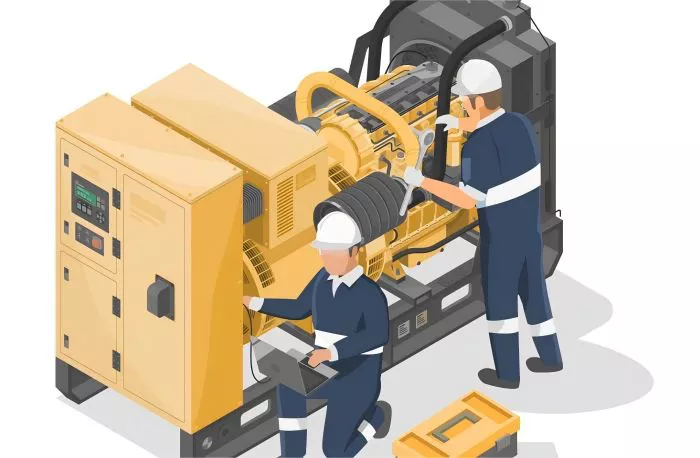Diesel generators are known for their reliability and efficiency, but they can also be quite noisy. Excessive noise can be a significant issue, especially in residential areas or work environments where maintaining a quiet atmosphere is crucial. This article provides a comprehensive guide on how to reduce the noise generated by diesel generators, covering various methods and practical tips.
1. Understanding Diesel Generator Noise
1.1 Sources of Noise
Diesel generators produce noise from several sources, including the engine, exhaust system, cooling fan, and mechanical vibrations. Identifying the primary noise sources is the first step in effectively reducing the overall noise level.
1.2 Noise Measurement
Noise levels are typically measured in decibels (dB). Understanding the current noise level of your generator helps in assessing the effectiveness of noise reduction methods. Use a sound level meter to measure the noise at different points around the generator.
2. Soundproof Enclosures
2.1 Building a Soundproof Enclosure
One of the most effective ways to reduce noise is to build a soundproof enclosure around the generator. The enclosure should be made of sound-absorbing materials and designed to minimize sound leakage.
Materials Needed:
Acoustic foam panels
Mass-loaded vinyl (MLV)
Plywood or metal sheets
Soundproof doors and windows
Construction Steps Measure the dimensions of your generator and create a frame using metal or wood.
Line the interior of the frame with acoustic foam panels and MLV.
Ensure the enclosure has adequate ventilation to prevent overheating.
Install soundproof doors and windows to allow access for maintenance.
2.2 Pre-Fabricated Enclosures
Pre-fabricated soundproof enclosures are available for purchase and can be a convenient solution. Ensure the enclosure is designed for your generator model and meets your noise reduction requirements.
3. Exhaust System Modifications
3.1 Installing a Muffler
A high-quality muffler can significantly reduce exhaust noise. Choose a muffler designed for diesel engines and compatible with your generator model.
Installation Steps:
Remove the existing exhaust pipe.
Attach the new muffler to the exhaust outlet.
Secure the muffler using clamps or welding as needed.
3.2 Extending the Exhaust Pipe
Extending the exhaust pipe and directing it away from noise-sensitive areas can help in reducing perceived noise levels. Use flexible exhaust tubing to extend the pipe and secure it with clamps.
4. Anti-Vibration Mounts
4.1 Using Anti-Vibration Mounts
Diesel generators produce vibrations that can amplify noise when transmitted to the ground or mounting surface. Anti-vibration mounts absorb these vibrations, reducing the overall noise.
Installation Steps:
Lift the generator using a hoist or jack.
Place anti-vibration mounts under the generator’s mounting points.
Lower the generator onto the mounts and secure it in place.
4.2 Isolation Pads
Isolation pads can be used in conjunction with anti-vibration mounts to further reduce noise. Place the pads under the generator or its enclosure to absorb additional vibrations.
see also: 5 Best Whole House Diesel Generator
5. Cooling Fan Noise Reduction
5.1 Replacing the Cooling Fan
Upgrading to a quieter cooling fan can reduce noise levels. Look for fans designed for low-noise operation and ensure they are compatible with your generator.
Replacement Steps:
Disconnect the power supply to the generator.
Remove the existing cooling fan.
Install the new low-noise fan and reconnect the power supply.
5.2 Installing Fan Silencers
Fan silencers can be installed to reduce the noise produced by the cooling fan. These silencers work by dampening the sound waves generated by the fan blades.
Installation Steps:
Measure the dimensions of the cooling fan housing.
Attach the fan silencer to the housing using adhesive or screws.
Ensure the silencer does not obstruct airflow or cooling efficiency.
6. Regular Maintenance
6.1 Routine Inspections
Regularly inspect your generator for loose or worn parts that may contribute to increased noise. Tighten any loose bolts and replace worn components as needed.
6.2 Lubrication
Proper lubrication of moving parts reduces friction and noise. Follow the manufacturer’s recommendations for lubricating the engine, bearings, and other moving parts.
Conclusion
Reducing the noise of a diesel generator involves a combination of soundproof enclosures, exhaust modifications, anti-vibration measures, cooling fan upgrades, and regular maintenance. By implementing these strategies, you can create a quieter and more comfortable environment while still benefiting from the reliability and efficiency of your diesel generator.
Related topics:

